Address
304 North Cardinal
St. Dorchester Center, MA 02124
Work Hours
Monday to Friday: 7AM - 7PM
Weekend: 10AM - 5PM
Address
304 North Cardinal
St. Dorchester Center, MA 02124
Work Hours
Monday to Friday: 7AM - 7PM
Weekend: 10AM - 5PM
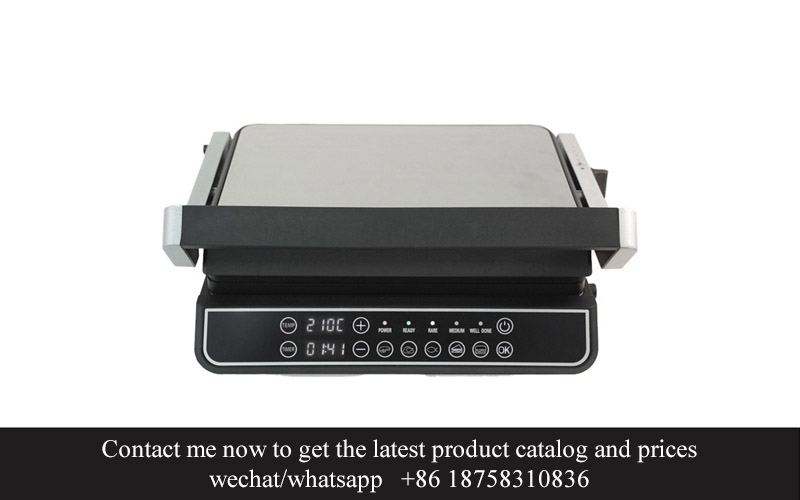
Understanding the intricate world of ODM juicer design can be a game-changer for businesses looking to stand out in the competitive kitchen appliance market. With the ever-evolving landscape of consumer preferences and technological advancements, it’s crucial to delve into the specifics of what makes a successful ODM juicer design. By exploring the nuances of this specialized service, we can uncover the key factors that contribute to its uniqueness and potential for market success.
The kitchen appliance industry has undergone a remarkable transformation over the years, with one of the most significant shifts being the rise of Original Design Manufacturing (ODM) services. This trend has become a cornerstone in the industry, offering brands and manufacturers a competitive edge in a market that’s ever-evolving.
As consumers demand more personalized and innovative products, the role of ODM in kitchen appliances has become increasingly vital. Brands are no longer satisfied with mass-produced items; they seek unique designs that resonate with their target audience and differentiate them from the competition.
One of the key reasons for the surge in ODM is the globalization of the market. With the world becoming more interconnected, companies are looking to expand their reach beyond local borders. ODM services provide a bridge for these brands to enter new markets with products that are tailored to the specific needs and preferences of those regions.
Customization is another driving force behind the popularity of ODM. Modern consumers value personalization, and kitchen appliances are no exception. Whether it’s a sleek, modern design or a functional, eco-friendly model, ODM allows brands to cater to a wide range of tastes and lifestyles.
The design process itself has become more sophisticated, with a focus on integrating the latest technology and materials. Smart appliances, for example, are becoming the norm, and ODM providers are at the forefront of creating these cutting-edge products. From intuitive interfaces to energy-efficient motors, the possibilities are endless.
Moreover, the ODM model offers cost savings for manufacturers. By outsourcing the design and production process, companies can reduce their overhead and focus on other core competencies. This streamlined approach also allows for faster time-to-market, ensuring that brands stay ahead of the curve.
Collaboration between brands and ODM partners is also a key factor in the success of these customized products. Open communication and a shared vision are crucial in translating a brand’s concept into a tangible product. This partnership often leads to a more cohesive and cohesive end product.
In terms of market trends, the demand for sustainable and eco-friendly appliances has grown significantly. ODM services are responding by creating products that are not only efficient but also environmentally conscious. This shift is not only beneficial for the planet but also for brands looking to appeal to a socially responsible consumer base.
Furthermore, the rise of e-commerce has played a role in the popularity of ODM. Online platforms have made it easier for consumers to discover and purchase unique kitchen appliances. ODM allows brands to quickly adapt to these market dynamics and offer products that align with online shopping preferences.
The rise of ODM in the kitchen appliance industry is also a testament to the power of innovation. As technology advances, the possibilities for new and improved designs are virtually limitless. From compact, space-saving appliances to multifunctional devices that can perform multiple tasks, ODM is at the heart of these advancements.
In the realm of innovation, ODM providers are also focusing on user experience. This means not just creating aesthetically pleasing designs but also ensuring that the appliances are intuitive and easy to use. The end goal is to enhance the consumer’s life, making their kitchen experience more enjoyable and efficient.
Despite the many benefits, the ODM model is not without its challenges. Navigating intellectual property rights, managing the supply chain, and ensuring quality control are just a few of the complexities involved. However, as the industry continues to grow, these challenges are being met with more sophisticated solutions.
In conclusion, the rise of ODM in the kitchen appliance industry is a clear sign of the times. It’s a testament to the consumer’s desire for unique, innovative, and sustainable products. As the market evolves, ODM will undoubtedly continue to play a pivotal role in shaping the future of kitchen appliances.

The ODM (Original Design Manufacturer) model has revolutionized the kitchen appliance industry, offering a fresh approach to product development that focuses on innovation and customization. In the context of juicers, the ODM design service plays a pivotal role in shaping the market with its unique offerings.
ODM juicer design services are tailored to meet the specific needs and preferences of customers, ensuring that each product is not just functional but also visually appealing and technologically advanced. This service involves a comprehensive process that starts with understanding the market demands and ends with a fully realized, ready-for-production juicer design.
One of the key aspects of the ODM juicer design service is market research. Design teams delve deep into consumer behavior, identifying trends that are shaping the industry. This research often involves analyzing sales data, consumer feedback, and emerging technologies to predict what will resonate with the target audience.
Customization is another cornerstone of the ODM process. Unlike mass-produced appliances, ODM juicers are designed with a focus on individuality. This can range from specific features like reverse functions for easier cleaning to unique designs that cater to specific aesthetic preferences. The service allows brands to differentiate their products in a crowded marketplace.
Collaboration is a crucial element in the ODM juicer design service. Designers work closely with engineers, manufacturers, and clients to ensure that the design is not only conceptually sound but also practical and feasible. This interdisciplinary approach helps in creating a product that is not just visually stunning but also efficient and durable.
The design phase of the ODM service is where creativity meets technology. Designers utilize advanced software to visualize and iterate on designs, making adjustments in real-time based on feedback. This allows for a more refined and error-free product, as any issues can be addressed before the manufacturing process begins.
Once the design is finalized, the ODM service often includes prototyping. This step is vital for testing the functionality and usability of the juicer. Prototypes are created using high-quality materials to ensure that the final product will perform as expected. The testing phase can involve a series of user trials to gather feedback and make any necessary improvements.
Quality control is a non-negotiable part of the ODM juicer design service. Manufacturers adhere to strict standards to ensure that the final product meets or exceeds the client’s expectations. This includes rigorous testing for safety, performance, and durability, ensuring that the juicer will be a reliable addition to any kitchen.
The ODM model also offers flexibility in terms of production. Clients can choose to have a single prototype created, or they can opt for a full-scale production run. This flexibility allows for testing the market with a limited batch before committing to a large-scale production, which is particularly beneficial for new or niche products.
In the realm of sustainability, the ODM juicer design service takes into account the environmental impact of the product. Designers and engineers work together to create juicers that are not only efficient in terms of energy use but also made from eco-friendly materials and designed for longevity, reducing the need for frequent replacements.
Lastly, the ODM juicer design service often includes branding and packaging design. The overall look and feel of the product are essential for creating a strong brand identity and making a memorable impression on consumers. This aspect of the service ensures that the juicer not only functions well but also looks great on a shelf or countertop.
In summary, the ODM juicer design service is a holistic approach to product development that combines market research, customization, collaboration, and innovation. It is this comprehensive service that allows brands to bring unique, high-quality juicers to market, setting them apart from competitors and meeting the evolving demands of consumers.
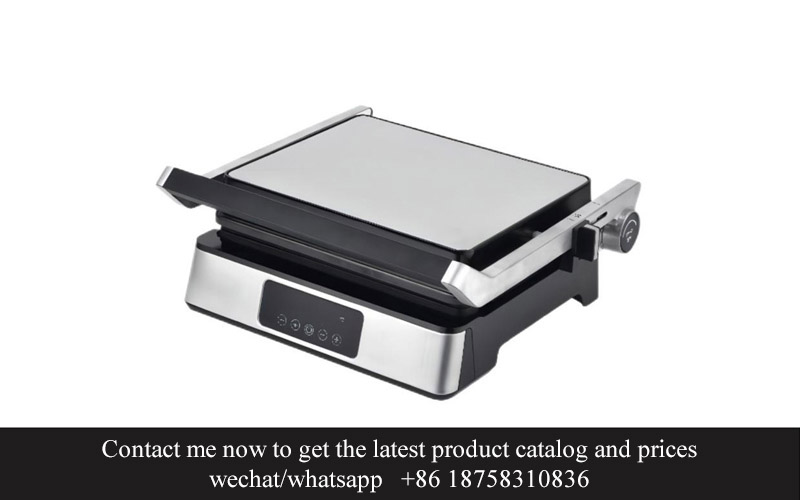
In the bustling world of kitchen appliances, the juicer has long been a staple in every modern kitchen. However, the landscape of juicer design has been revolutionized by Original Design Manufacturing (ODM) services. These services offer a unique blend of creativity, functionality, and market insight that sets them apart in the industry.
One of the standout features of ODM juicer design is its ability to blend aesthetics with practicality. Designers working within the ODM framework are not just focused on creating visually appealing products; they are also dedicated to ensuring that each juicer is a joy to use. This means considering the ergonomics of the design, making sure the juicer fits comfortably in the hand and operates smoothly, reducing the effort needed to extract the perfect amount of juice.
Customization is another hallmark of ODM juicer design. Unlike mass-produced items, ODM services allow for a high degree of personalization. Brands can specify their unique requirements, from the materials used to the color schemes and even the specific features they want to include. This level of control ensures that the final product not only stands out on the shelf but also resonates with the brand’s identity and the target consumer’s preferences.
Innovation is at the heart of ODM juicer design. With the rapid pace of technological advancements, ODM teams are constantly pushing the boundaries of what a juicer can be. This includes integrating smart features like touchscreens, Bluetooth connectivity for tracking nutritional information, or even incorporating self-cleaning mechanisms. These innovations not only enhance the user experience but also position the product as a cutting-edge appliance in the eyes of consumers.
Functionality is paramount in ODM juicer design. Designers meticulously analyze the user journey to identify pain points and inefficiencies. By streamlining the juicing process, they create appliances that are easier to use, maintain, and clean. Features like adjustable speed settings, wide feed chutes, and easy-to-detach parts all contribute to a juicer that not only performs well but also simplifies the morning routine.
Market trends play a crucial role in shaping ODM juicer designs. By staying abreast of current consumer preferences and emerging trends, ODM teams can anticipate what will resonate with the market. This could mean focusing on health-conscious consumers with juicers that offer more nutritional extraction or catering to the eco-friendly crowd with models made from sustainable materials. The ability to adapt to these trends ensures that the juicer design remains relevant and appealing to a broad audience.
Collaboration is a key aspect of ODM juicer design. Designers often work closely with engineers, marketers, and even end-users to ensure that the final product meets all expectations. This collaborative approach fosters a deeper understanding of the product’s potential impact and allows for a more holistic design process. It’s not just about creating a juicer; it’s about creating a solution that fits seamlessly into the user’s life.
The attention to detail in ODM juicer design is unparalleled. From the precision engineering of the blades to the selection of high-quality materials, every aspect of the design is scrutinized to ensure durability and performance. This dedication to quality means that the juicer is not only a durable appliance but also one that maintains its value over time.
In the realm of juicer design, ODM services have introduced a new level of sophistication. The unique combination of tailored design, innovative features, and market-savvy strategies has transformed the way juicers are perceived and used. By focusing on user experience, sustainability, and cutting-edge technology, ODM juicer designs are setting new standards in the kitchen appliance industry. Whether it’s through intuitive interfaces, sleek aesthetics, or groundbreaking functionality, these designs are not just juicers—they are experiences.
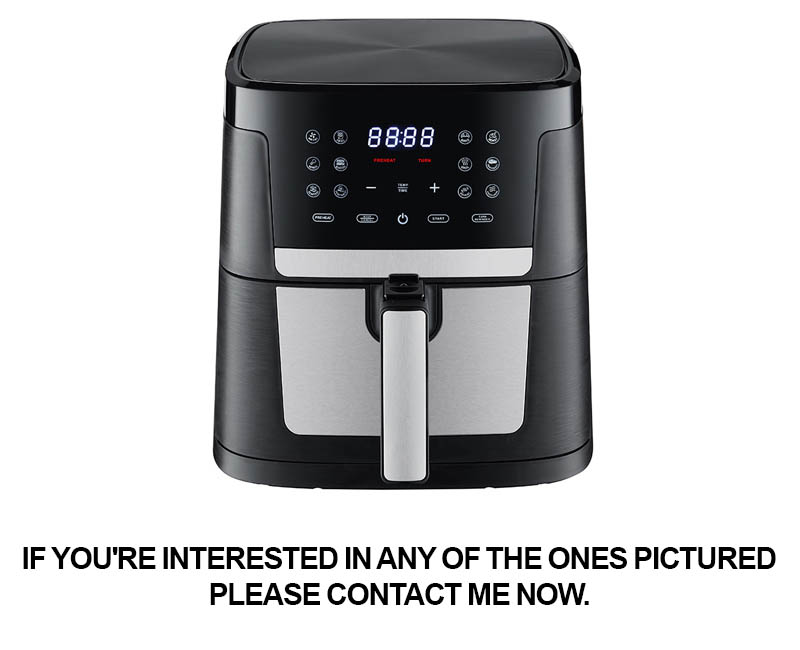
In the ever-evolving landscape of kitchen appliance design, staying ahead of market trends is paramount. For Original Design Manufacturers (ODM) in the juicer market, understanding these trends is not just beneficial—it’s essential for survival and success. Here’s how market trends shape the ODM juicer design process:
Consumer Preferences ShiftsConsumers today are more health-conscious than ever before, leading to a surge in demand for juicers that can extract the most nutrients from fruits and vegetables. ODMs must design juicers that cater to this preference, often incorporating features like low-speed juicing to preserve enzymes and vitamins.
Sustainability and Eco-Friendly DesignsThe environmental movement has influenced consumer buying habits, with many seeking out products that are sustainable and eco-friendly. ODMs are responding by designing juicers made from recyclable materials, with energy-efficient motors that reduce carbon footprints.
Smart Technology IntegrationSmart appliances are becoming increasingly popular, and juicers are no exception. ODMs are integrating smart features such as Bluetooth connectivity, allowing users to control their juicers through their smartphones. These features not only enhance convenience but also add a layer of tech-savviness to the product.
Compact and Space-Saving DesignsModern kitchens are often smaller, and space is at a premium. ODMs are creating juicers that are compact and space-saving, with sleek designs that can be easily stored away when not in use. This is particularly important for urban dwellers and those with limited kitchen space.
Customization and PersonalizationConsumers today are looking for products that they can customize to their liking. ODMs are responding by designing juicers with interchangeable parts, such as different juicing screens for different types of produce, and even customizable drink recipes that can be programmed into the appliance.
Aesthetic AppealThe aesthetic of a juicer can be a significant factor in its appeal to consumers. ODMs are focusing on design elements that not only serve a functional purpose but also enhance the visual appeal of the kitchen. This includes using modern materials, vibrant colors, and innovative shapes.
Health and Safety FeaturesSafety is a top priority in kitchen appliance design. ODMs are incorporating features like safety locks, overheat protection, and easy-to-clean components to ensure that their juicers are not only effective but also safe for the entire family to use.
Versatility andJuicers that can perform a variety of tasks beyond just juicing are becoming more popular. ODMs are designing multi-functional juicers that can also make baby food, smoothies, and even pasta. This versatility expands the market appeal and utility of the product.
Global Market ConsiderationsODMs must consider the global market when designing juicers. This means understanding cultural preferences, regulatory requirements, and distribution channels in different regions. Designing a juicer that can be easily adapted to various markets is crucial for international success.
Continuous InnovationMarket trends are dynamic, and ODMs must be ready to innovate continuously. This involves staying abreast of the latest research in juicing technology, food trends, and consumer behavior. By doing so, ODMs can ensure that their designs remain at the forefront of the market.
Collaborative DesignODMs are often collaborating with food scientists, dietitians, and even chefs to design juicers that not only extract the best from produce but also enhance the flavor and nutritional value of the final product. This collaborative approach ensures that the juicer design aligns with the latest culinary and health insights.
Market Feedback and AdaptationFinally, ODMs must be responsive to market feedback. By analyzing consumer reviews, sales data, and usage patterns, they can adapt their designs to better meet customer needs. This iterative process is key to staying relevant and competitive in the fast-paced juicer market.
In essence, market trends in ODM juicer design are a complex interplay of consumer demands, technological advancements, and environmental concerns. By staying attuned to these trends, ODMs can create juicers that not only meet but exceed customer expectations, ensuring a strong position in the competitive kitchen appliance industry.
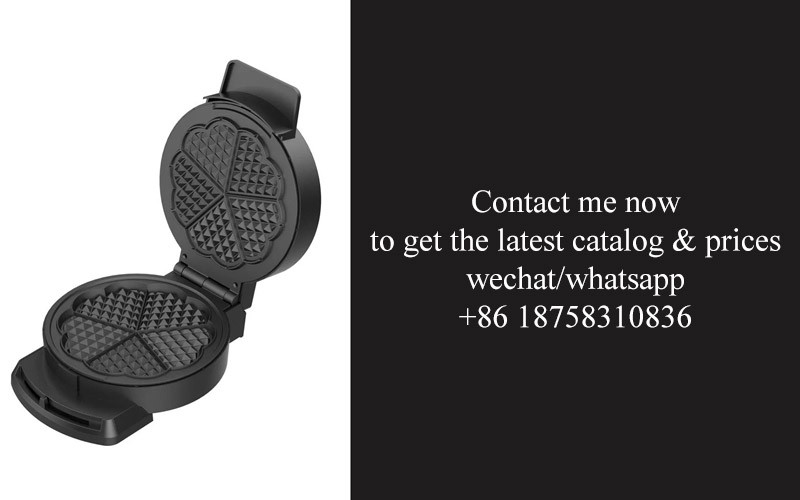
Understanding the consumer’s lifestyle is pivotal in crafting a juicer design that resonates with market demands. By analyzing data on daily routines, we can tailor our designs to fit seamlessly into the hustle and bustle of modern life. This could mean creating compact models for urban dwellers or more robust, durable designs for those who lead an active outdoor lifestyle.
The demand for healthier living has surged in recent years, and this shift is reflected in the juicer market. Data shows that consumers are not just looking for any juicer; they’re seeking high-quality machines that can extract the most nutrients from their fruits and vegetables. By integrating this insight into our ODM juicer designs, we ensure that our products are not only stylish but also functional and health-conscious.
Technology integration is another key data-driven insight that can boost the success of ODM juicer designs. Smart features, such as Bluetooth connectivity for tracking nutrition or touch-screen interfaces for easy operation, can significantly enhance the user experience. Analyzing data on consumer preferences reveals that these tech-savvy additions can make a juicer more appealing to tech enthusiasts and health buffs alike.
Sustainability is no longer just a buzzword; it’s a critical factor in product design. Consumers are increasingly concerned about the environmental impact of their purchases. Data indicates that juicers made from recycled materials or designed for energy efficiency can sway a buyer’s decision. Our ODM juicer designs incorporate eco-friendly materials and energy-saving mechanisms to address this growing market trend.
Market research also shows a preference for versatility in juicer designs. Consumers are looking for machines that can handle not just fruits and vegetables but also nuts, grains, and even ice. By analyzing this data, we can design juicers with dual-function blades or adjustable speeds to cater to a wide range of juicing needs.
Customization is another trend that we’ve gleaned from data. Many consumers are willing to pay a premium for a juicer that allows them to create personalized recipes. Our ODM juicer designs now feature interchangeable parts and attachments that enable users to customize their juicing experience.
Aesthetics play a significant role in product appeal, and this is something that data has consistently shown. By analyzing consumer preferences, we can create juicer designs that not only perform well but also look sleek and modern. This often means incorporating innovative shapes, vibrant colors, and materials that stand out on the shelf.
Safety is a non-negotiable aspect of juicer design, and data has made it clear that consumers are more likely to purchase from brands that prioritize safety features. Our ODM designs now include features like non-slip bases, childproof locks, and overheat protection to ensure peace of mind.
The competitive landscape is also a crucial data point. By analyzing the features and pricing of competitors, we can position our ODM juicers to offer something unique that sets them apart. This could be an exclusive technology, a superior build quality, or an innovative approach to user experience.
In the realm of ODM juicer design, data is the compass that guides us through the ever-evolving market. By continuously analyzing consumer behavior, market trends, and technological advancements, we can refine our designs to ensure they not only meet but exceed expectations. The success of our ODM juicer designs hinges on this data-driven approach, as it allows us to stay ahead of the curve and offer products that truly resonate with the modern consumer.
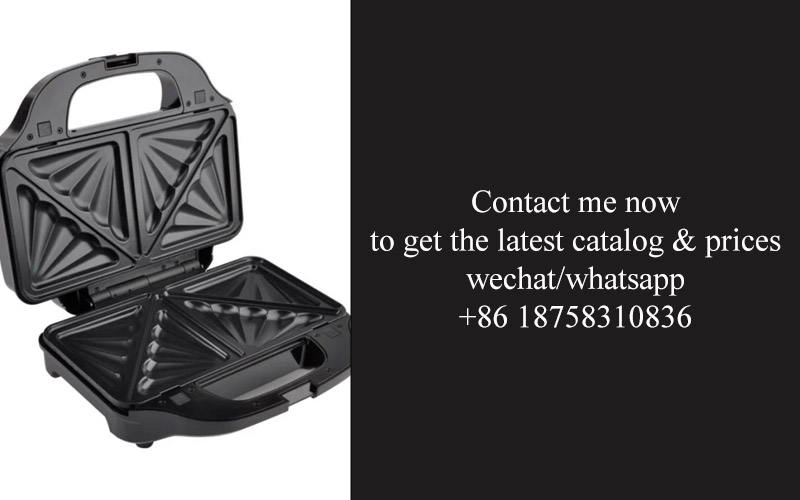
In the world of ODM (Original Design Manufacturer) juicer designs, there are several standout examples that showcase the success achieved through innovative design and market insight. Let’s delve into a few case studies that highlight the triumphs in this field.
One such success story is the “EcoBoost Pro” juicer, designed by a renowned ODM firm for a global appliance brand. The EcoBoost Pro was a response to the growing demand for eco-friendly and energy-efficient kitchen appliances. The design team focused on reducing the juicer’s footprint and energy consumption without compromising on performance.
The EcoBoost Pro’s sleek, modern design featured a compact footprint that was perfect for small kitchens. The innovative motor technology allowed the juicer to extract more juice from fruits and vegetables with less energy, making it a favorite among eco-conscious consumers. The juicer’s smart features, such as an automatic shut-off and overload protection, added a layer of safety and convenience.
Another notable case is the “Healthy Harvest” juicer line, developed by an ODM company for a mid-range appliance brand. This series was crafted to cater to the rising interest in health and wellness, offering a range of models with various functionalities.
The “Healthy Harvest” line included a centrifugal juicer with a built-in pulp control system, which allowed users to adjust the consistency of the juice. The design team also introduced a masticating juicer that preserved the nutritional value of the produce by extracting juice at a slower pace. The juicers were ergonomically designed, with easy-to-use interfaces and intuitive controls, making them accessible to a broad consumer base.
One of the most innovative designs came from an ODM firm that created a “Silent Spin” juicer for a high-end appliance brand. The Silent Spin juicer addressed the common issue of noise in juicers by incorporating advanced sound-dampening technology. The design team carefully engineered the internal components to reduce vibrations and noise, resulting in a juicer that could be used in the early morning without disturbing the household.
The design of the Silent Spin juicer also focused on aesthetics, with a polished stainless steel finish that complemented modern kitchen decor. The juicer’s compact design and sleek lines made it a stylish addition to any kitchen, while its high-quality materials and durable construction ensured longevity.
A unique case study involves an ODM company that developed a “Multi-Fruit” juicer for a niche market. This juicer was designed to handle a wide variety of fruits, including the more delicate berries and citrus fruits, without damaging them. The design team created a specialized blade system that could adjust to different fruit sizes and textures, ensuring that the juicer could process a diverse range of produce.
The Multi-Fruit juicer also featured an advanced juicing process that separated the juice from the pulp and seeds, resulting in a cleaner and more nutritious end product. The design incorporated a smart system that could recognize the type of fruit being processed and adjust the juicing cycle accordingly. This customization not only improved the taste and quality of the juice but also extended the life of the juicer’s blades.
In the case of a “Healthy Living” juicer, an ODM firm collaborated with a health-focused brand to create a juicer that not only extracted juice but also provided nutritional information on the screen. The design team integrated a built-in scanner that could identify the produce and display its nutritional value, encouraging users to make healthier choices.
The “Healthy Living” juicer was also designed with ease of cleaning in mind. The removable parts were dishwasher-safe, and the juicer’s compact size made it convenient to store. The intuitive design and health-conscious features of this juicer resonated with consumers looking for a complete solution to their juicing needs.
These case studies highlight the importance of understanding consumer needs, market trends, and technological advancements in the design of ODM juicers. Each of these designs showcases a unique approach to meeting customer expectations, from eco-friendliness to health-conscious features, and from noise reduction to customization. By staying attuned to these factors, ODM companies can continue to drive innovation and success in the juicer market.
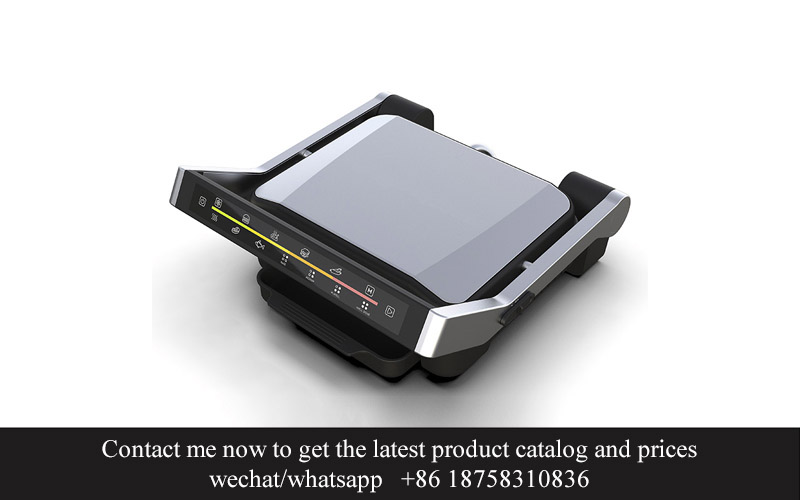
In the competitive world of kitchen appliances, partnering with an Original Design Manufacturer (ODM) juicer design service can offer a plethora of benefits that can significantly elevate a brand’s position in the market. Here’s a closer look at some of the key advantages:
Tailored InnovationODM juicer design services specialize in creating custom solutions that align perfectly with a brand’s vision. This tailored approach ensures that the juicer design not only meets the market’s demands but also stands out with unique features that resonate with consumers.
Cost-Effective SolutionsManufacturing products in-house can be costly, especially when it comes to research, development, and prototyping. ODM services often have streamlined processes and economies of scale, which can lead to more cost-effective solutions without compromising on quality.
Rapid Prototyping and Time-to-MarketTime is of the essence in the consumer electronics market. ODM juicer design services can expedite the design and production process, from initial sketches to a fully functional prototype. This rapid prototyping allows for quicker time-to-market, ensuring that a brand stays ahead of the competition.
Quality Control and ComplianceEnsuring that a juicer meets both safety standards and consumer expectations is crucial. ODM partners typically have robust quality control measures in place and are well-versed in compliance regulations. This means that brands can rest assured that their products will be of high quality and compliant with necessary certifications.
Access to Cutting-Edge TechnologyODM companies often invest heavily in the latest design and manufacturing technologies. By partnering with an ODM, brands gain access to these advanced tools, which can lead to innovative designs that incorporate the newest materials and technologies available.
Customization and FlexibilityCustomization is key in the appliance market. ODM services offer the flexibility to adapt designs to specific market needs or customer preferences. Whether it’s a change in size, color, or functionality, ODMs can accommodate these requests efficiently.
Global ReachODM partners may have a global presence, which can be beneficial for brands looking to expand into new markets. These companies have the knowledge and resources to help navigate international regulations, logistics, and cultural nuances, making the global rollout of a new juicer design smoother.
Continuous Improvement and Feedback LoopsODM companies often engage in continuous improvement initiatives. They collect feedback from a variety of sources, including customer reviews and market research, and use this information to refine and enhance their designs over time. This feedback loop ensures that products remain relevant and competitive.
Brand Image EnhancementA well-designed juicer can greatly enhance a brand’s image. ODM services can help create a product that not only functions effectively but also looks sleek and modern, aligning with the brand’s values and appealing to the target audience.
Focus on Core CompetenciesBy outsourcing the design and manufacturing of juicers to an ODM, companies can focus on their core competencies, such as marketing, sales, and customer service. This strategic decision allows businesses to allocate resources more efficiently and concentrate on what they do best.
ScalabilityAs demand for juicers fluctuates, an ODM can help manage production volumes effectively. Whether it’s scaling up for a peak season or scaling down during slower periods, ODMs have the capacity to adapt to changing market demands without disrupting the brand’s supply chain.
Enhanced Market PositioningWith a unique and well-designed juicer, a brand can gain a competitive edge. ODM juicer design services help position products as innovative and high-quality, which can attract new customers and strengthen the brand’s market position.
Long-Term PartnershipsODM relationships can lead to long-term partnerships, fostering a collaborative environment where both parties benefit from ongoing innovation and mutual growth. This can result in a more sustainable and profitable business relationship.
Risk MitigationWhen introducing a new product, there are inherent risks. ODMs can help mitigate these risks by providing expertise in product development, testing, and validation. This support can reduce the likelihood of product failures and improve the overall success rate of new product launches.
Competitive Edge Through DifferentiationDifferentiation is critical in a crowded market. An ODM juicer design service can help create a product that is distinct from competitors, whether through unique features, innovative design, or superior functionality. This differentiation can be a powerful tool in attracting and retaining customers.
By leveraging the expertise and resources of an ODM juicer design service, brands can unlock a range of benefits that can drive their success in the dynamic kitchen appliance industry. From cost savings and rapid prototyping to quality control and market positioning, the advantages of such partnerships are clear and substantial.
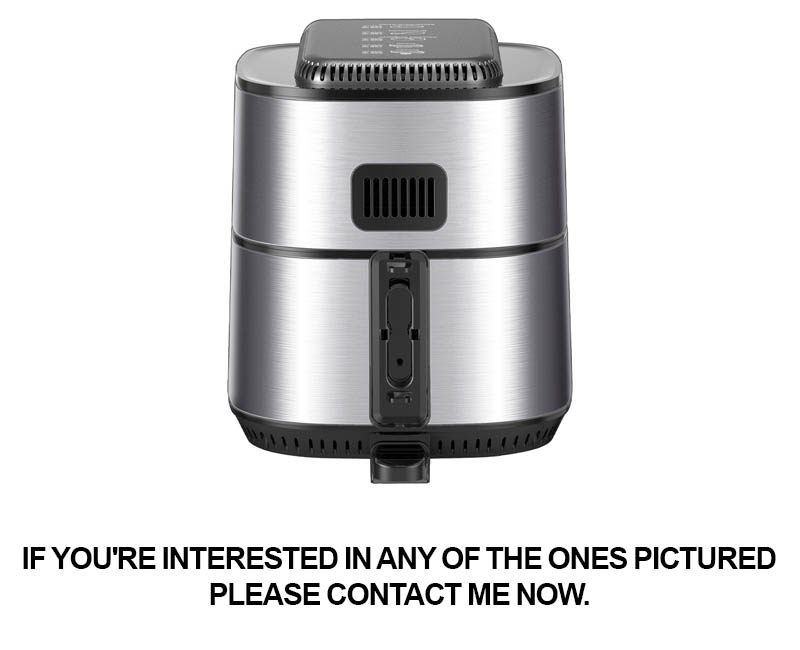
Understanding the intricacies of ODM (Original Design Manufacturer) juicer design can be likened to crafting a masterpiece in the culinary world. It’s a process that requires a keen eye for innovation, a deep understanding of market demands, and the ability to translate those needs into functional, aesthetically pleasing products. Here are some of the challenges that come with navigating the world of ODM juicer design:
Balancing Functionality and AestheticsCreating a juicer that not only performs well but also looks sleek and appealing is no small feat. Designers must often grapple with the challenge of integrating advanced technology with a design that doesn’t compromise on style. The result is a product that not only stands out on the shelves but also resonates with consumers who value both form and function.
Material SelectionChoosing the right materials for juicer design is crucial. They must be durable, non-toxic, and easy to clean. The challenge lies in finding a balance between affordability and quality, ensuring that the materials used are not only safe for users but also cost-effective for manufacturers.
Efficiency and PerformanceA juicer’s efficiency and performance are at the heart of its design. Engineers must optimize the juicing process to extract the maximum amount of juice from fruits and vegetables while minimizing waste. This involves intricate design work on the blades, filters, and other components that directly impact the juicer’s output.
Regulatory ComplianceNavigating the regulatory landscape is a significant challenge in ODM juicer design. Different countries have varying standards for safety, labeling, and environmental impact. Designers must stay abreast of these regulations to ensure that their products comply without compromising on innovation.
Market Trends and Consumer PreferencesKeeping up with the latest market trends and understanding consumer preferences is essential. Trends can shift rapidly, and a design that was popular last year might not resonate with today’s consumers. Designers must conduct thorough market research to anticipate what will appeal to consumers and what features they are looking for in a juicer.
Cost ManagementCost management is a constant challenge in ODM juicer design. Designers must find ways to innovate without breaking the bank. This often involves finding cost-effective solutions for materials, manufacturing processes, and assembly. Balancing innovation with affordability is a delicate balance that requires strategic thinking.
SustainabilityWith growing environmental concerns, sustainability has become a key factor in product design. Designers must consider the lifecycle of the juicer, from raw material sourcing to disposal. This includes designing for recyclability, using eco-friendly materials, and minimizing energy consumption during the juicer’s operation.
Customization and PersonalizationCustomers today expect more than just a standard product; they want something that fits their lifestyle and preferences. ODM juicer design services often face the challenge of providing customization options that allow for personalization without complicating the manufacturing process or driving up costs.
Integration of TechnologyIntegrating cutting-edge technology into juicer design can be challenging. Designers must ensure that new features like smart connectivity, touch controls, or automated cleaning systems are user-friendly and enhance the overall user experience.
Supply Chain ManagementThe complexity of the supply chain can pose significant challenges in ODM juicer design. Designers must work closely with suppliers to ensure timely delivery of components, manage quality control, and maintain inventory levels. This requires efficient coordination and often involves navigating international trade and logistics.
User ExperienceUltimately, the success of an ODM juicer design hinges on the user experience. Designers must consider how the product feels in the hand, how intuitive it is to use, and how it fits into the user’s daily routine. This often involves extensive user testing and iterative design improvements.
In conclusion, the challenges in ODM juicer design are multifaceted, requiring a combination of technical expertise, market insight, and creative problem-solving. By tackling these challenges head-on, designers can create juicers that not only meet the needs of consumers but also stand out in a competitive market.
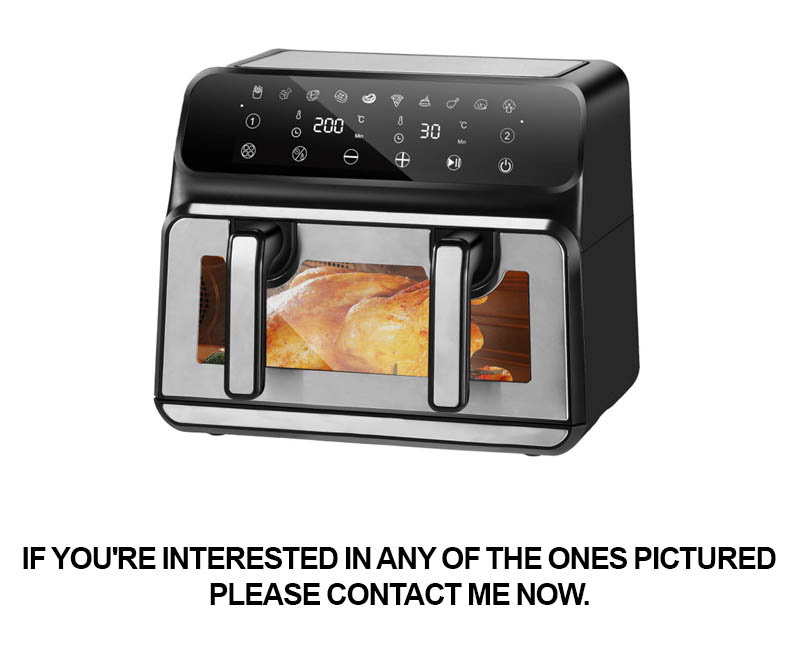
The evolution of ODM (Original Design Manufacturing) in juicer design is not just about creating products; it’s about anticipating and meeting the ever-changing demands of consumers. Here’s a glimpse into what we can expect from the future of ODM juicer design.
As technology advances, the integration of smart features is becoming a norm. Imagine a juicer that not only extracts juice efficiently but also offers real-time health tracking and nutritional advice. The future holds a fusion of kitchen appliances and smart technology, where juicers might become part of a larger ecosystem of health and wellness.
Materials are another frontier. We’ve seen the shift from plastic to stainless steel and now, with advancements in sustainable materials, we might see eco-friendly options that are both durable and sustainable. Juicers could be crafted from recycled materials, or even biodegradable components, catering to a market that values sustainability.
Customization is not just a trend but a necessity. ODM juicer designs will likely offer a wide range of configurations and add-ons to cater to individual preferences. Whether it’s a sleek design for a modern kitchen or a compact model for small living spaces, the future of juicer design will be all about personalization.
The rise of health-conscious consumers has led to a demand for juicers that are not just functional but also safe. Expect to see a focus on hygiene and safety in future ODM designs, with features like easy-to-clean parts, food-grade materials, and certifications that guarantee the safety of the juicing process.
Energy efficiency is another area that’s set to see significant changes. As energy costs rise and environmental concerns grow, juicers designed with energy-saving technology will become more prevalent. This could include innovations like improved motor efficiency or smart power management systems.
The convenience factor is not to be overlooked. ODM juicer designs may incorporate features like automatic pulp ejection, built-in filters, and digital displays that make juicing a breeze. Time-saving features will become a key selling point as consumers look for ways to simplify their daily routines.
Collaboration between ODM companies and culinary experts is also shaping the future of juicer design. Expect to see juicers that are not just for extracting juice but for creating unique, healthy recipes. Features like adjustable speeds and additional attachments for blending or frothing might become standard.
Another interesting development is the emphasis on portability. With the increasing popularity of outdoor activities and health-focused lifestyles, juicers that can easily be taken on the go or stored away compactly will become a hit. ODM designs will need to balance functionality with ease of transportation.
Lastly, the integration of augmented reality (AR) and virtual reality (VR) could revolutionize how consumers interact with juicers. Imagine using AR to visualize how a juicer would look in your kitchen or VR to see a demonstration of its features before making a purchase. These technologies could enhance the shopping experience and provide a deeper understanding of the product.
In conclusion, the future of ODM juicer design is a blend of innovation, sustainability, personalization, and smart technology. As the industry continues to evolve, the juicer will likely become more than just a kitchen appliance; it will be a part of a larger health and lifestyle revolution.
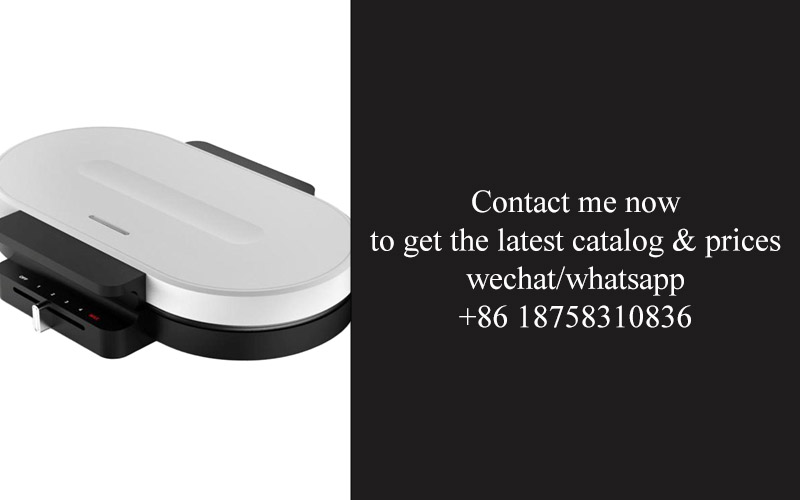
Understanding the specific needs of your juicer design is crucial when seeking the right ODM (Original Design Manufacturer) service. Here’s a detailed look at what to consider:
Market Research and TrendsBefore diving into selecting an ODM juicer design service, it’s essential to conduct thorough market research. Analyze current trends, consumer preferences, and the latest innovations in juicing technology. This insight will guide you in specifying the type of juicer design that aligns with the market demand.
Quality Standards and Manufacturing ExpertiseEnsure that the ODM service you choose has a strong track record of producing high-quality juicers. Look for manufacturers with certifications that reflect their adherence to industry standards and quality control processes. Their expertise in materials, construction, and assembly should be evident in the juicers they’ve produced.
Customization and FlexibilityA good ODM service should offer customization options to tailor the juicer design to your brand and product specifications. This could include choosing materials, colors, features, and even branding. The service should be able to adapt to your unique requirements without compromising on quality.
Innovation and Design CapabilitiesThe ODM should have a team of experienced designers and engineers who are adept at innovation. They should be able to bring fresh ideas to the table, incorporating the latest technologies and design elements that can set your juicer apart from competitors.
Prototyping and TestingBefore finalizing the design, it’s important to have a prototype that can be tested for functionality and durability. The ODM should be capable of creating a detailed prototype that allows you to visualize and test the juicer’s performance. This phase is crucial for identifying and fixing any potential issues before mass production.
Production and Supply Chain ManagementThe ODM should have a robust production facility and efficient supply chain management. They need to be able to handle the manufacturing process, including sourcing components, assembly, and quality assurance, all while meeting your production timelines and volume requirements.
Cost and Budget ConsiderationsCost is a significant factor in choosing an ODM juicer design service. While you want to ensure you’re getting the best quality and design, it’s also important to work within a budget. Compare quotes from different ODMs, but be cautious of services that seem too good to be true, as this might reflect a compromise on quality.
Communication and CollaborationEffective communication is key when working with an ODM. The service should be responsive to your inquiries and willing to collaborate closely with your team. Regular updates, clear documentation, and a collaborative approach can help ensure that the final product meets your expectations.
Post-Production SupportConsider the ODM’s post-production support. They should offer assistance with certifications, compliance, and even marketing materials. This support can be invaluable, especially when navigating the complexities of new product launches.
References and Track RecordBefore finalizing your choice, ask for references from past clients. Review their track record and see if their previous designs and products match the quality and innovation you’re looking for. A strong portfolio can give you confidence in their ability to deliver on your expectations.
Environmental and Social ResponsibilityIn an era where sustainability is a growing concern, consider an ODM that practices environmental and social responsibility. This includes using eco-friendly materials, ensuring fair labor practices, and adhering to ethical manufacturing standards.
Long-Term Relationship PotentialLastly, think about the potential for a long-term relationship with the ODM. A company that is committed to your success and growth can be a valuable partner in the future, providing ongoing support and innovation as your brand evolves.
By carefully considering these aspects, you can select an ODM juicer design service that not only meets your immediate needs but also supports your long-term business goals. Remember, the right partner can make all the difference in bringing a successful and innovative juicer to market.